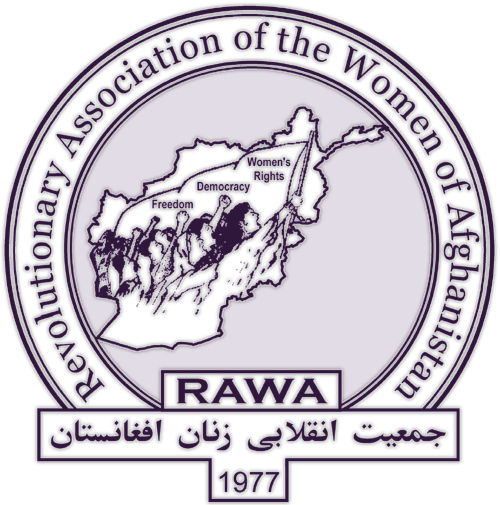new cold war
Arunachal Pradesh: pawn in the new Great Game
Last month's US-India nuclear deal obviously signaled a rise in Sino-Indian tensions, seen by Beijing (accurately) as part of an encirclement strategy. The deal called for inclusion of India in the Nuclear Suppliers Group (NSG), which drew immediate criticism from China. The NSG is comprised of 46 nuclear supplier states, including China, Russia and the US, that have agreed to coordinate export controls on civilian nuclear material to non-nuclear-weapon states. The group has up to now been made up of signatories to the Non-Proliferation Treaty (NPT)—which, as China was quck to note, does not include India (or Pakistan, or the "secret" nuclear nation Israel). More to the point, India is not a "non-nuclear-weapon state." (The Diplomat, Feb. 14; Arms Control Association)
Coup for Delhi in Sino-Indian space race
Bloomberg'a unsubtle headline is "India Beats China to Mars Orbit at 11% Cost of US Probe." The Indian Space Research Organization's Mangalyaan, or "Mars craft," made orbit around the red planet at a cut-rate $74 million, and reached Mars two days after NASA's $671 million MAVEN craft. Bloomberg quotes a statement from Beijing's Foreign Ministry congratulating India on "landmark progress" that is the "pride of Asia." But your can feel the grudging nature of the obligatory compliment. The account aslo states: "The South Asian nation is trying to keep up with China, which plans to complete a manned space station by 2022." As for MAVEN, NPR informs us it stands for Mars Atmosphere and Volatile Evolution, and is "about understanding the history of the climate on Mars." Posing it in such neutral and apolitical terms is patently dishonest and begs the question of toward what aim? Accounts don't note that Halliburton is drawing up plans for mining operations on Mars. (Yes, really.)
Nicaragua: inter-oceanic canal route approved
Nicaragua's Commission for the Development of the Grand Canal on July 7 approved a route for the proposed inter-oceanic canal through the Central American country. The waterway, to be built by Chinese company HKND, is slated to run from the Río Punta Gorda (South Atlantic Autonomous Region) on the Caribbean Coast to Brito (Rivas department) on the Pacific coast—a route more than three times as long as the 48-mile Panama Canal. The Commission said the canal will be operational by 2020, but questions have been raised on how the Hong Kong-based company plans to finance the project, estimated at $50 billion—nearly four times greater than Nicaragua's national economy. The canal is to be privately owned and operated. Ecologists have raised concerns about impacts on Lake Nicaragua (also known as Cocibolca), Central America's largest lake and an important fresh-water source for the country. There are fears the the water used by the canal's locks could seriously deplete the lake. The Río San Juan, which feeds the lake and forms the border with Costa Rica, would be dammed to feed the locks. Costa Rica has formally demanded the right to review environmental impact studies for the project before work begins. The Rama-Kriol indigenous people, whose territories in the Punta Gorda river basin would be impacted, are demanding to be consulted on the project. (La Prensa, Nicaragua, July 17; Tico Times, Costa Rica; July 15; Nicaragua Dispatch, Reuters, El Financiero, Mexico, July 8)
Tiananmen Square: futility of revisionism
Chinese authorities carried out aggressive detentions ahead of the 25th anniversary of the Tiananmen Sqauare massacre, with New Tang Dynasty news agency reporting 70 journalists, dissidents and rights defenders arrested over the past month. Blogger and journalist Gao Yu went missing at the end of April, and Beijing activist Hu Jia has been under house arrest for more than three months, after announcing his intention to hold a vigil in the square on the June 4 anniversary, in defiance of authorities. The Wall Street Journal's China Real Time blog notes that tens of thousands attended a vigil in Hong Kong, but the New York Times' Sinosphere blog reports that Tiananmen Square itself was so thick with security patrols and checkpoints that even the usual throng of tourists was down to a mere trickle. A tantalyzing report in the Globe & Mail says that a small group of black-clad citizens did manage to walk through the square in a silent, symbolic protest.
Rival trade pacts vie for Pacific hegemony
In a move being openly portrayed as part of a race with the US-backed Trans-Pacific Partnership (TPP) for hegemony in the Asia-Pacific region, China has set up a working group to study the feasibility of a Free Trade Area of the Asia Pacific (FTAAP). The proposal comes ahead of a meeting in May of trade ministers from the Asia Pacific Economic Cooperation (APEC) forum, which China will host. Wang Shouwen, an assistant commerce minister, assured: "We think there will be no conflict between the FTAAP and the region's other FTAs under discussion." But reports note that the news comes just as progress of the TPP has snagged over Japanese insistence on protecting its agricultural and automotive sectors. Chinese President Xi Jinping in October said at the APEC business forum in Indonesia that Beijing will "commit itself to building a trans-Pacific regional cooperation framework that benefits all parties"—an obvious veiled criticism of the TPP. (Tax News, May 5; AFP, April 30)
US plays Mongolia card against China
Pentagon chief Chuck Hagel toured Asia earlier this month ahead of Obama's coming visit, and at an April 10 stop in Ulan Bator signed a "joint vision" statement with his Mongolian counterpart Dashdemberel Bat-Erdene, calling for expanding military cooperation through joint training and assistance. "A strong US-Mongolia defense relationship is important as part of the American rebalance to the Asia-Pacific region," Hagel told a joint press conference. Bat-Erdene ruled out the possibility of hosting US forces, citing a Mongolian law that bars foreign military bases from the country. But the agreement is clearly aimed at extending US military encirclement of China. Days earlier, Hagel had lectured his hosts in Beijing over China's establishment of an air defense zone in the East China Sea. He also made a flat warning about the disputed Senkaku/Diaoyu islands, telling reporters: "We affirmed that since [the Senkaku Islands] are under Japan's administrative control, they fall under Article 5 of our Mutual Security Treaty." (AFP, April 10; Time, April 8)
China and Japan can't stop fighting World War II
In a slightly surreal case, Kyodo news agency reports April 20 that a Shanghai Maritime Court ordered the seizure of a vessel owned by Japanese shipping giant Mitsui OSK Lines at a port in Zhejiang province for failing to pay compensation in "a wartime contractual dispute." It seems that in 1936, Mitsui's predecessor, Daido Shipping Co, rented two ships on a one-year contract from China's Zhongwei Shipping Co. The ships were commandeered by the Imperial Japanese Navy, and later sank at sea. The suit was brought against Mitsui by grandsons of the founder of Zhongwei Shipping, and has been batted around in China's courts for years. In 2012, the Supreme People's Court rejected Mitsui's petition for retrial, affirming the Maritime Court's finding that the company must pay. The decision to seize the ships now seems pretty clearly retaliation for Japanese cabinet minister Keiji Furuya's visit to the Yasukuni shrine days earlier. Prime Minister Shinzo Abe himself sent a "ritual offering" to the shrine ahead of Japan's spring festival, which starts this week. All of this is happening (again less than coincidentally) exactly as Japan has started construction of a military radar station on Yonaguni Island—just 150 kilometers from the disputed gas-rich Senkaku archipelago, claimed by China as the Diaoyu Islands. (Reuters, Singapore Today, Xinhua, BBC News)
Baltics militarized by NATO amid Russian threats
NATO on April 1 began a two-day exercise, briging more than 100 US Air Force personnel, along with F-15 fighter jets and a Germany-based Airborne Warning and Control System (AWACS) craft, to former Soviet air bases in Lithuania. Denmark is also sending six F16 fighter jets to the Baltic as part of an expanded NATO air policing mission, with regular patrols to begin May 1. The incidence of Russian jets flying close enough to Baltic airspace this year to prompt NATO jets being scrambled has increased to about once a week, according to Lithuania's defense ministry. NATO jets were scrambled about 40 times in both 2012 and 2013; in 2004, the year the Baltic republics joined NATO, it only happened once.















Recent Updates
6 hours 8 min ago
10 hours 57 min ago
1 day 2 hours ago
1 day 2 hours ago
1 day 9 hours ago
1 day 11 hours ago
2 days 3 hours ago
2 days 10 hours ago
4 days 4 hours ago
4 days 4 hours ago